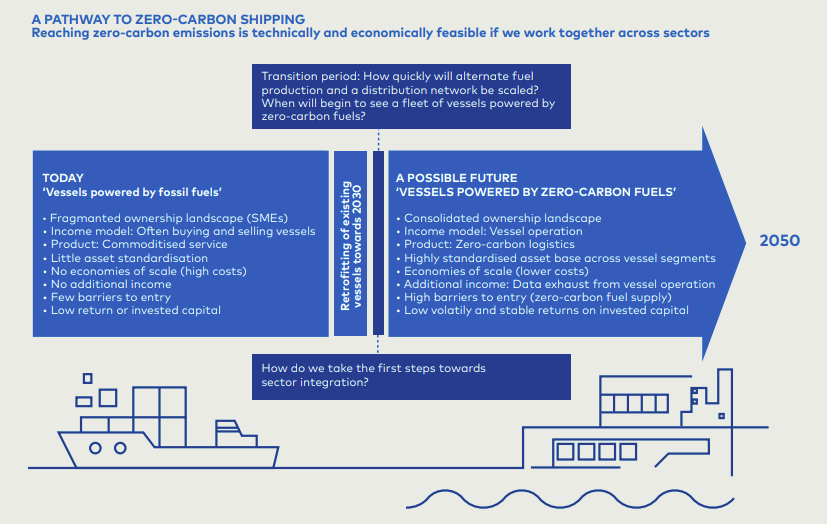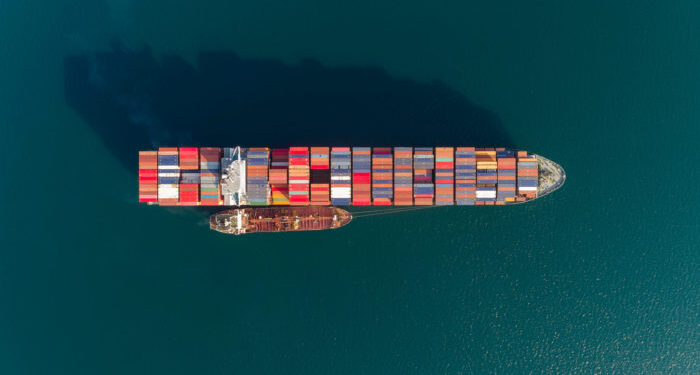A newly-established Nordic Green Ammonia-Powered Ship (NoGAPS) consortium revealed that green ammonia holds potential to play a significant role in decarbonizing maritime transport if investors and operators are presented with a credible business model.
The Nordic Green Ammonia-Powered Ship concept study brings together key players in the entire value chain, who have elaborated a concept for a green ammonia-powered gas carrier, transporting ammonia as a cargo in Northern Europe and using zero-emission ammonia as a fuel.
The initiative comes amid growing discussions on the need for a transition to zero-emission shipping and as recent research estimates that zero-emission fuels need to make up 5% of the international fuel mix by 2030 if the industry is to meet decarbonization targets by mid-century.
Understanding the technologies and business models needed to deliver zero-emission shipping is key. The NoGAPS concept study examines the full value chain viability of powering ships with green ammonia. It finds that using green ammonia as a fuel is both practical and feasible. Focus should now be on measures that can strengthen the business case for zero-emission ammonia,
…says Jesse Fahnestock, Project Director at the Global Maritime Forum.

[smlsubform prepend=”GET THE SAFETY4SEA IN YOUR INBOX!” showname=false emailtxt=”” emailholder=”Enter your email address” showsubmit=true submittxt=”Submit” jsthanks=false thankyou=”Thank you for subscribing to our mailing list”]
The NoGAPS project report has been developed by the Global Maritime Forum and Fürstenberg Maritime Advisory with support by consortium project partners; BW Epic Kosan, Danish Ship Finance, DNB, DNV, MAN Energy Solutions, Wärtsilä, Yara International, and Ørsted with co-funding from Nordic Innovation.
The consortium investigated the vessel, the fuel and the fueling options, as well as the business, financing and policy considerations. The major NoGAPS conclusions are:
- The potential of green ammonia-powered shipping to contribute to the decarbonization of the maritime sector is significant, and ammonia carriers present a logical starting point for demonstrating this potential.
- Neither the technical considerations nor the associated regulatory approval for a green ammonia-powered vessel present major obstacles to putting the M/S NoGAPS on the water.
- Ammonia synthesized from green hydrogen represents a credible long-term, zero-emission fuel.
The most important challenge to be overcome is to develop and demonstrate a business model that is credible in the eyes of investors and operators. Both the vessel design and the fuel sourcing strategy offer opportunities to reduce risks and costs in meaningful ways. - Government support and public finance can both accelerate the short-term timetable for investment in demonstration and improve the outlook for long-term deployment of green ammonia as a shipping fuel.
- Due to the currently higher costs of green ammonia relative to conventional shipping fuels, the NoGAPS project reports also outlines a number of measures and complimentary measures from governments that can strengthen the business case for green ammonia-powered shipping.
There are no significant technical barriers towards large-scale green zero-carbon ammonia production and ammonia can be delivered at scale reliably and safely to the shipping industry…The NoGAPS concept study has proven the viability and credibility of green ammonia as shipping fuel and Yara believes that collaboration across industries will remove barriers to making this a reality,
…said Magnus Ankarstrand, President, Yara Clean Ammonia.
In addition, the project partners have identified a number of measures that can strengthen the business case:
- Some in-kind contributions/financial concessions to reduce the risks of cost overruns
- Vessel design optimization to minimize the cost related to ammonia fuel storage
- A long-term chartering contract or joint venture to decrease the risk of ship ownership
- Dual fuel capabilities to decrease the exposure to fuel supply risks
- A transition strategy from grey NH3 to green NH3 that is aligned with access to subsidies and premia and reflected in the risk sharing in the chartering contract/joint venture.
The following complementary measures by governments will likely be necessary:
- Grant financing of the “excess” costs of vessel construction relative to conventional ships
- Loan guarantees
- Contracts for difference or equivalent for green ammonia production/use
- Eventual regulations or incentives for CO2 reductions.

One key finding of the study is that it is possible to use green ammonia as a natural choice of fuel for an LPG carrier. There are still areas to be explored, but NoGAPS has taken some big steps along the path to ammonia-powered shipping,
…added Hans-Henrik Ahrenst, Performance Manager, Naval Architect, BW Epic Kosan.






























































